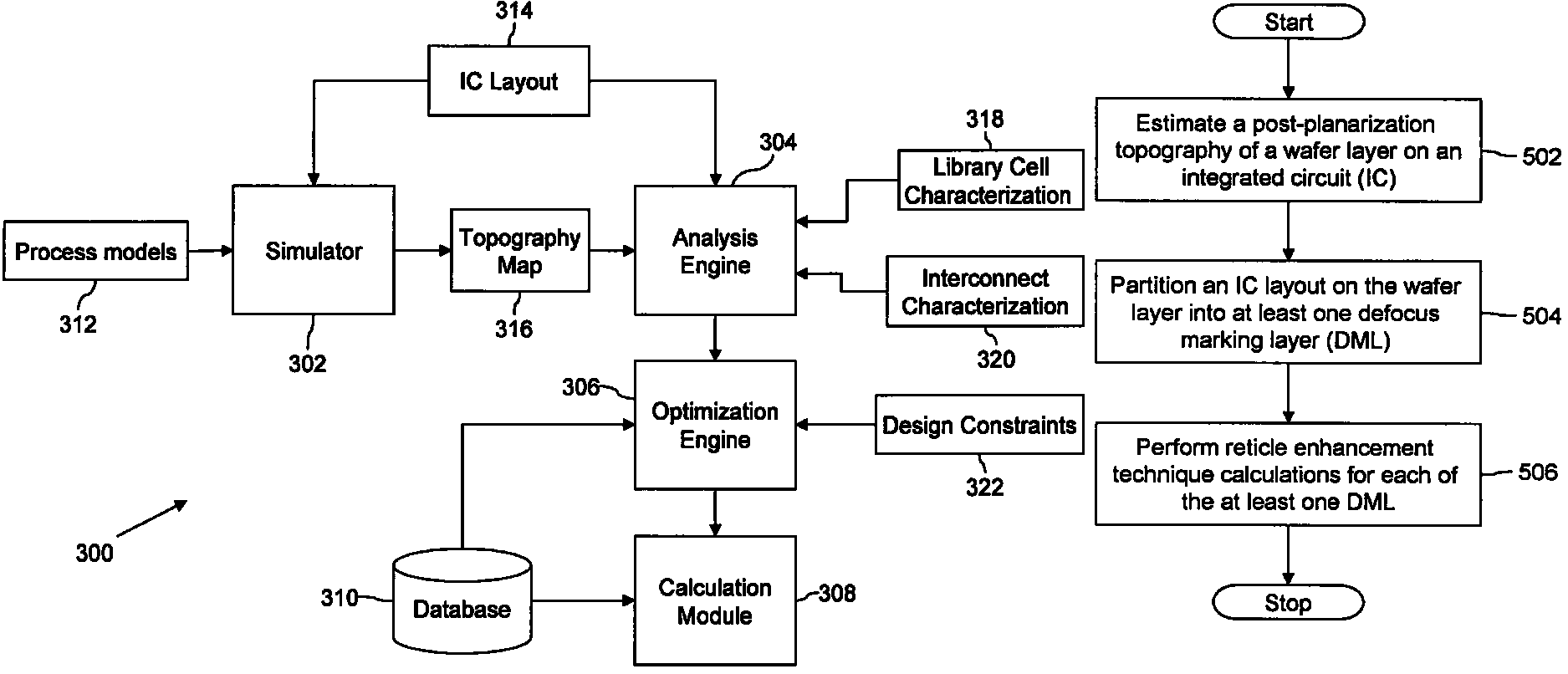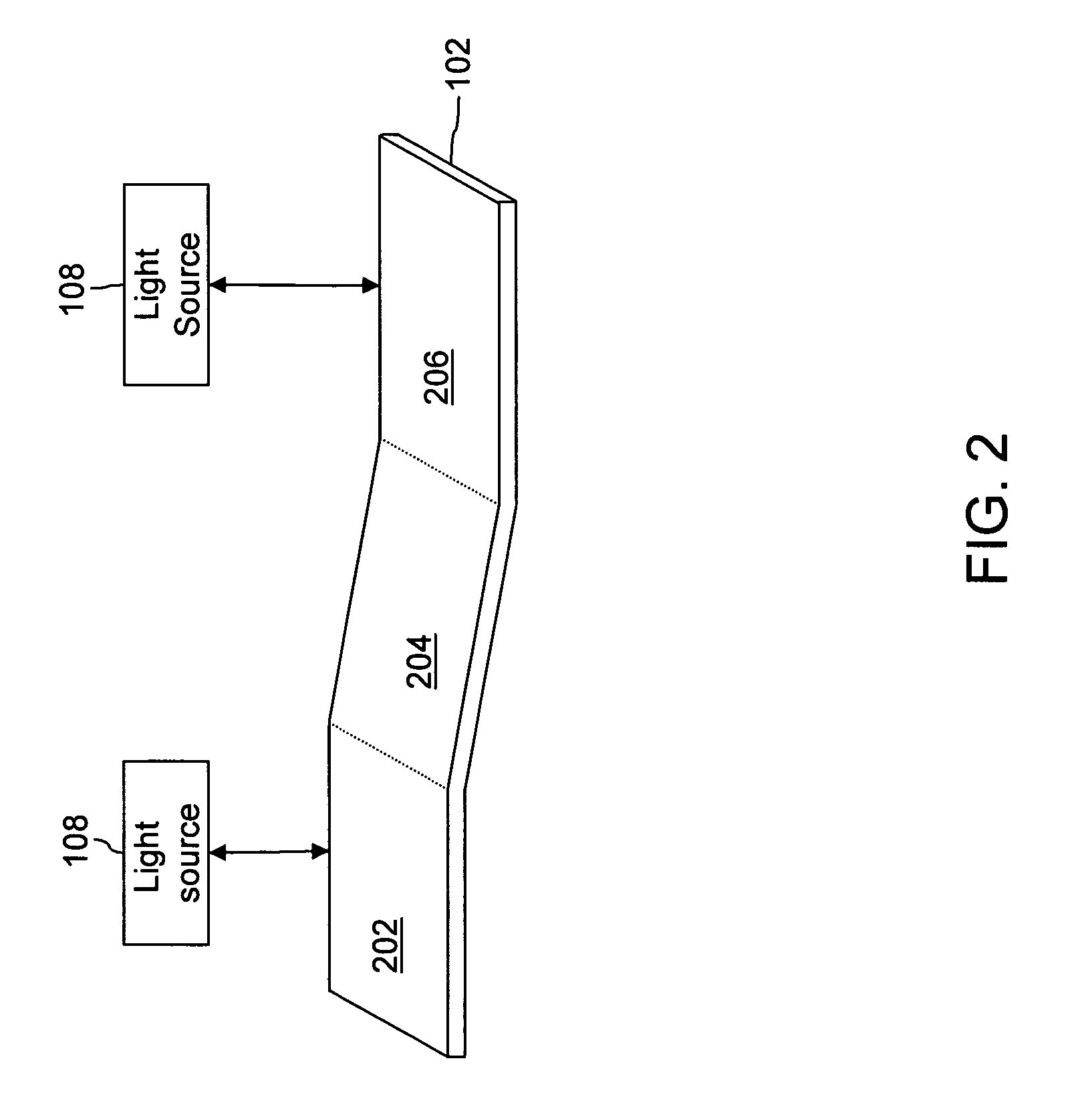Method and system for topography-aware reticle enhancement
a topography-aware, reticle technology, applied in the direction of semiconductor/solid-state device testing/measurement, instruments, photomechanical equipment, etc., can solve the problems of unreliable patterning accuracy, method and system cited above, affecting patterning accuracy and manufacturing yield, etc., to improve the design of the photomask, improve the performance of the integrated circuit, and reduce the error in the transfer of an ic layou
- Summary
- Abstract
- Description
- Claims
- Application Information
AI Technical Summary
Benefits of technology
Problems solved by technology
Method used
Image
Examples
Embodiment Construction
[0029]Various embodiments of the present invention provide a method, system, and a computer program product for reticle enhancement during manufacture of an integrated circuit (IC). A post-planarization topography of a wafer layer on the IC is estimated. Reticle enhancement technique calculations (RET) such as optical proximity correction and phase-shifting are performed taking into consideration the post-planarization topography of the wafer layer, thereby increasing the parametric yield in the manufactured IC.
[0030]FIG. 1 is a block diagram illustrating an optical lithographic system 100, in accordance with an embodiment of the invention. Optical lithographic system 100 creates a reduced circuit pattern image on a wafer layer 102 during lithography. Optical lithographic system 100 includes a lens 104, a reticle 106, and a light source 108.
[0031]Wafer layer 102 is a semiconductor layer on which an IC layout is to be created. The IC layout represents patterns of IC devices to be pri...
PUM
 Login to View More
Login to View More Abstract
Description
Claims
Application Information
 Login to View More
Login to View More - R&D
- Intellectual Property
- Life Sciences
- Materials
- Tech Scout
- Unparalleled Data Quality
- Higher Quality Content
- 60% Fewer Hallucinations
Browse by: Latest US Patents, China's latest patents, Technical Efficacy Thesaurus, Application Domain, Technology Topic, Popular Technical Reports.
© 2025 PatSnap. All rights reserved.Legal|Privacy policy|Modern Slavery Act Transparency Statement|Sitemap|About US| Contact US: help@patsnap.com



